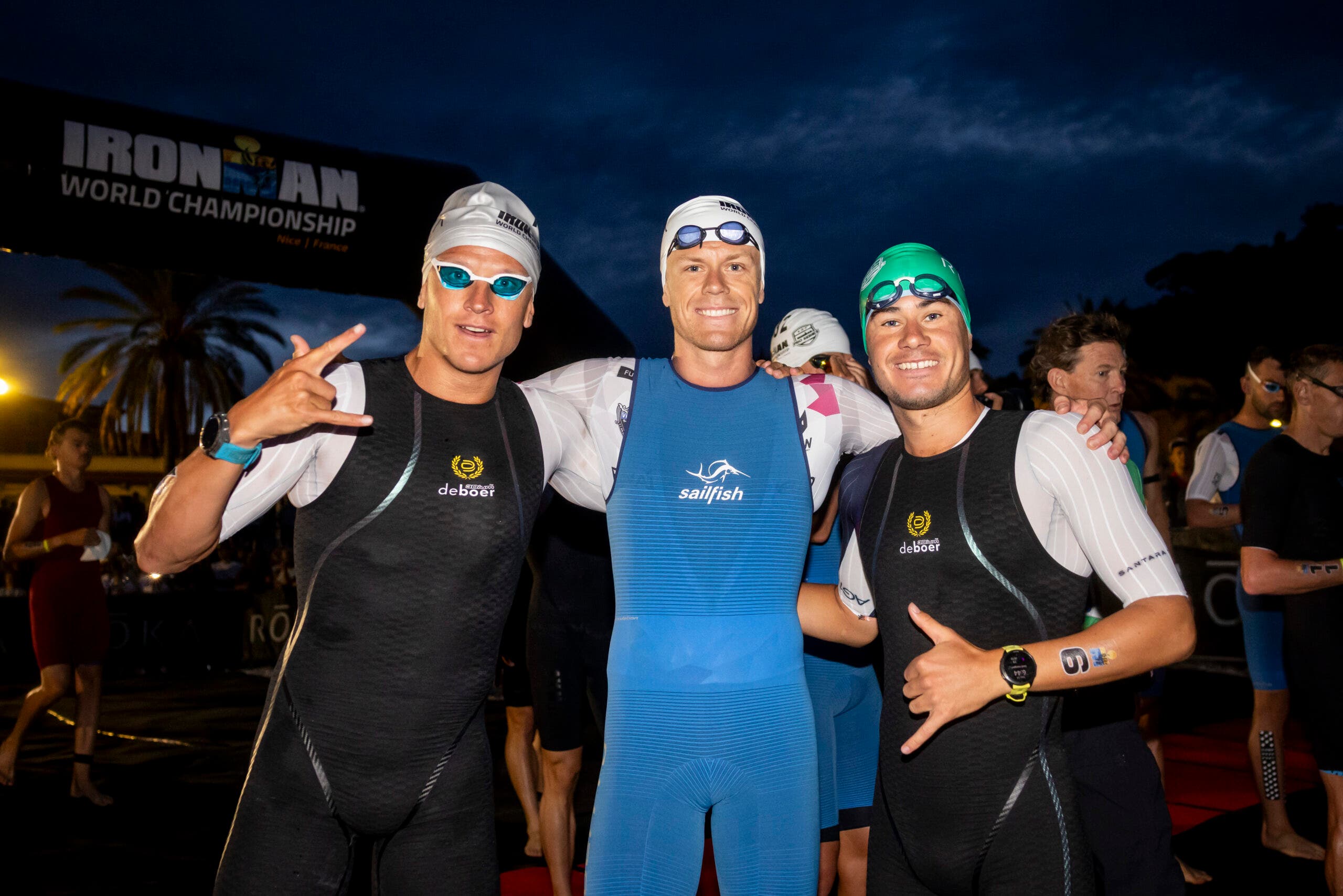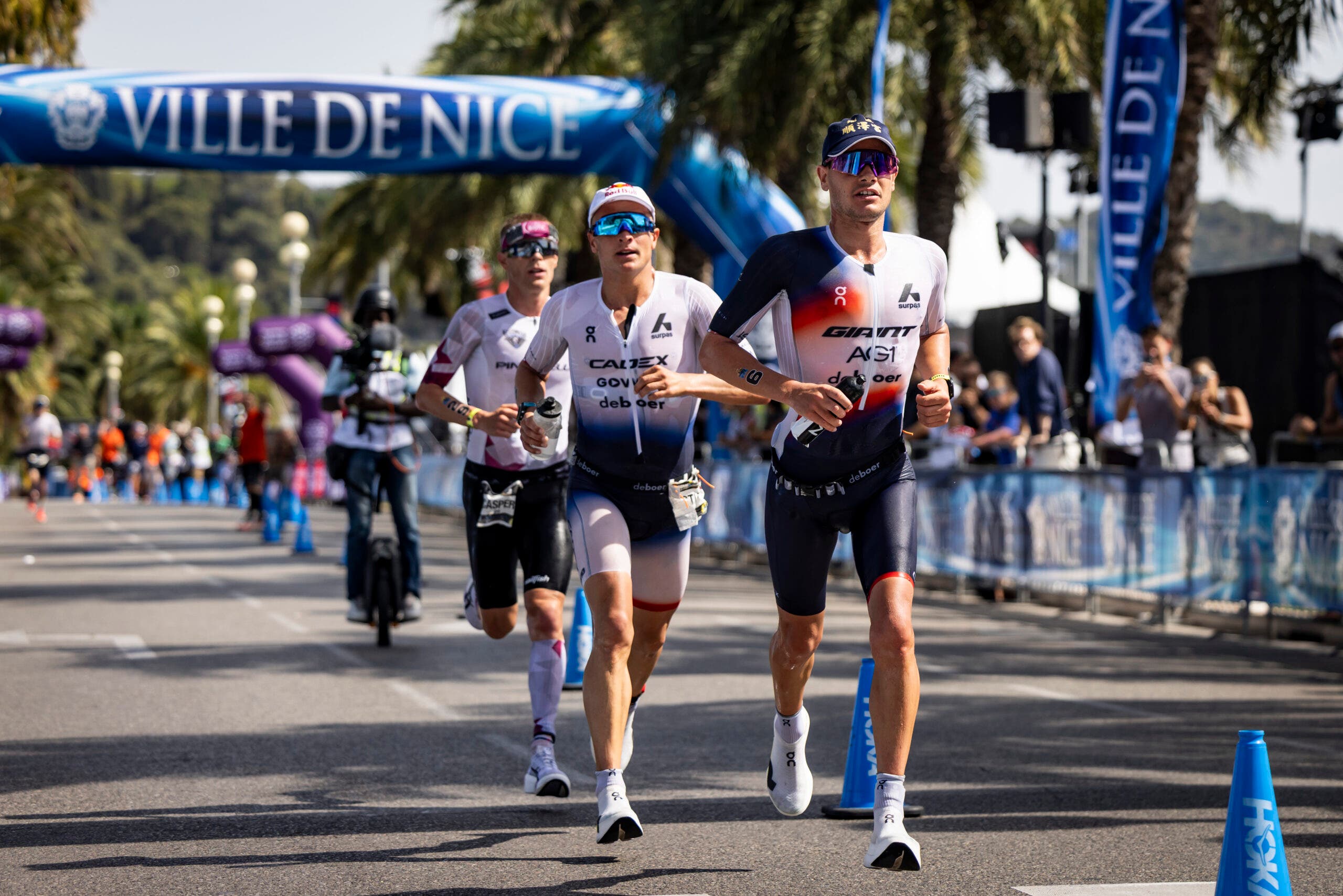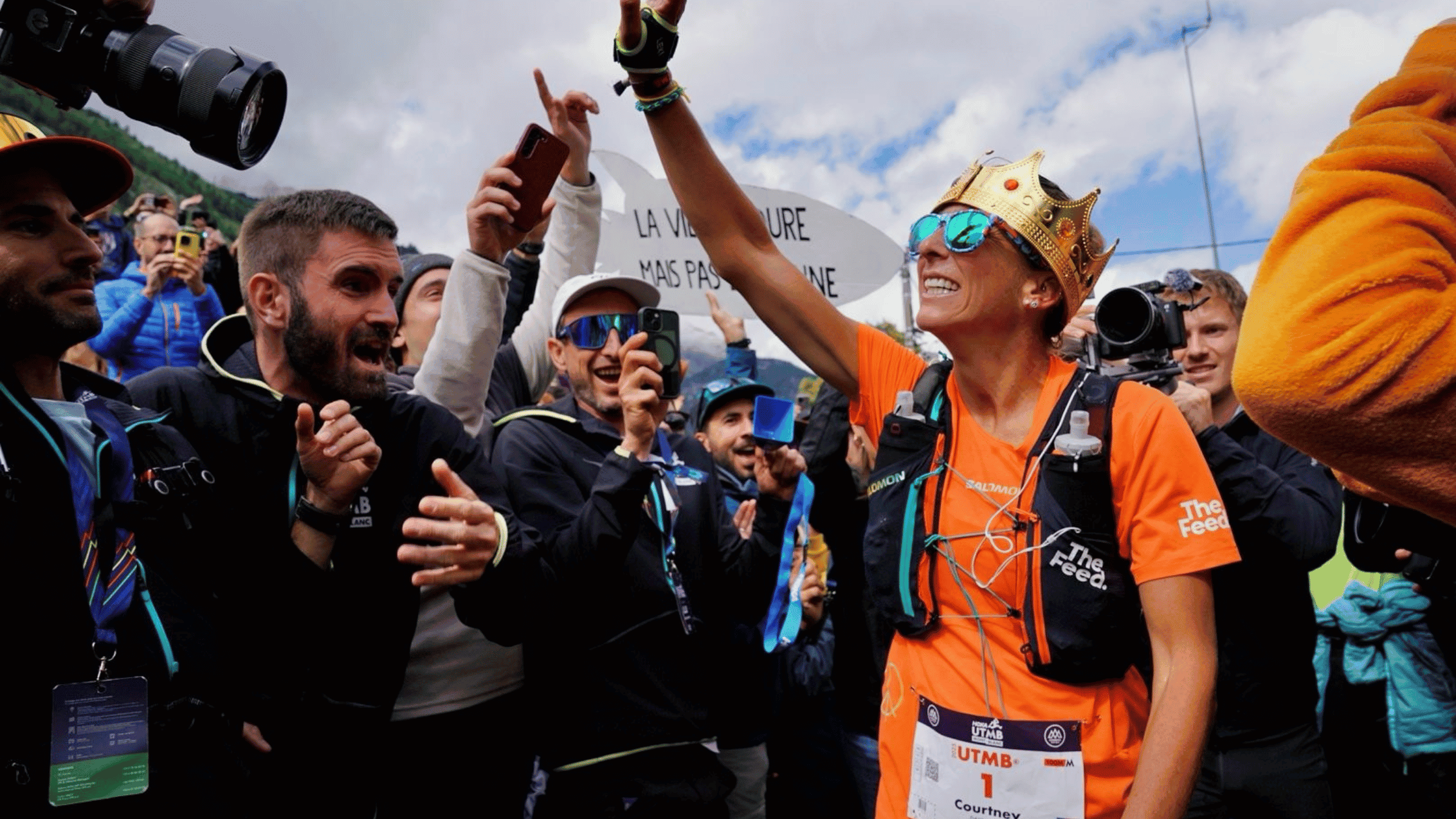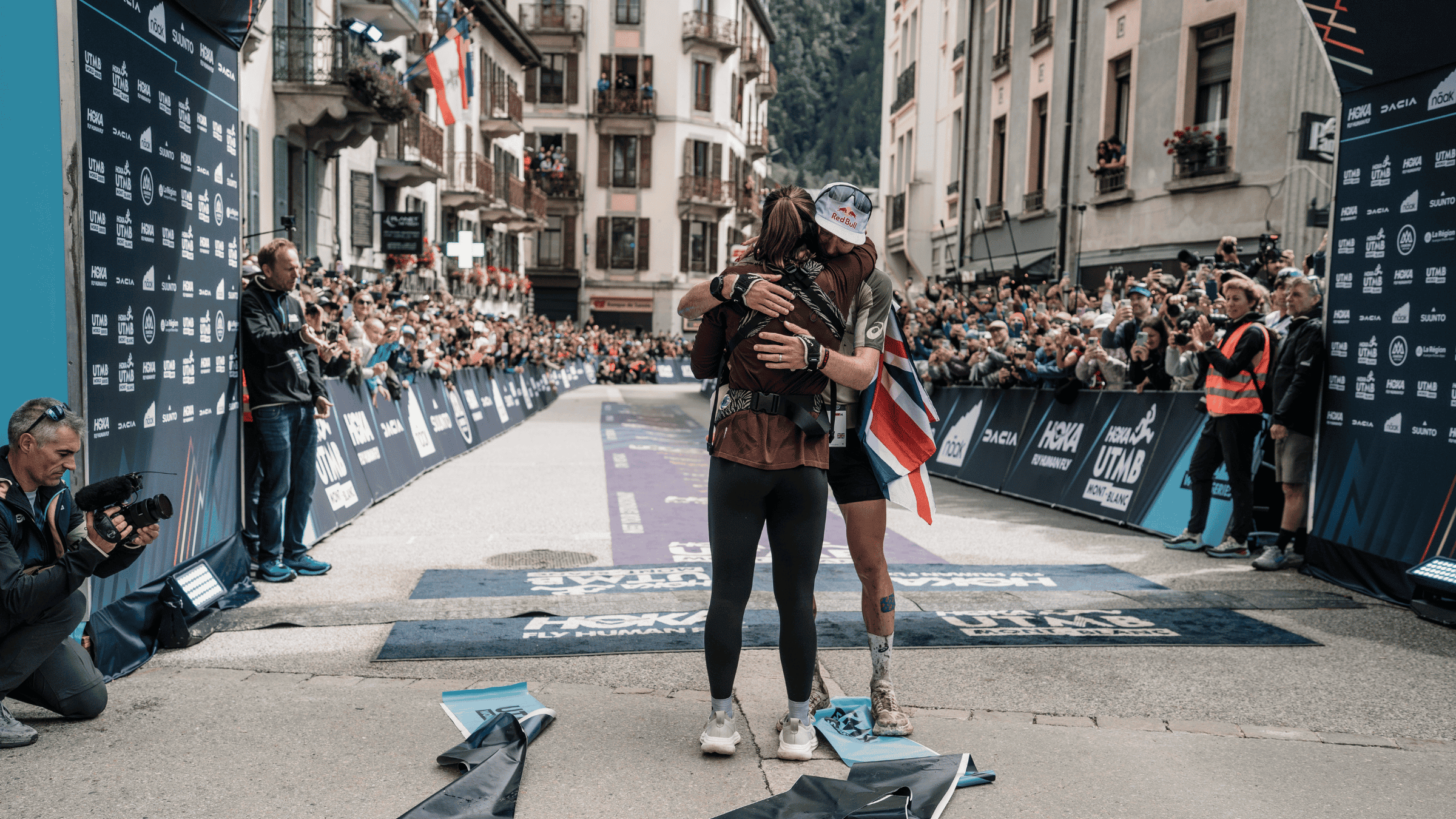Updated October 16, 2025 01:32PM
The Ironman World Championship has got to be the dumbest sporting event in the world.
If you can survive a 2.4-mile swim, 112-mile bike, and marathon run in the suffocating heat and humidity of Hawaii, you’ve figured out endurance sport. If you can win the race, you are cutting the edge of it.
At the women’s 2025 Ironman World Championship in Kona on Saturday, some of the world’s best did not survive. (In the metaphorical sense, anyway, they are all OK.)
“We came close to a line you never want to cross,” Reece Charles-Barclay said after pulling his wife, Lucy, off the course—as she led the race—at mile 17. That put Taylor Knibb out ahead, and just two miles from the finish she got carted off the course in an ambulance.
This brings us to why I’m ranting about triathlon in a running publication. For the past several years, I’ve had the honor of joining our sister publication, Triathlete Magazine, to report on this absurdity. Now that I’m revealing my cynicism, they may never invite me back. But in triathlon’s defense, the incessant boundary pushing at this event makes it particularly instructive for us runners. If high-carb fueling and those cooling headbands that look like medieval crowns are any indication, triathlon is consistently three to five years ahead of running.
And there’s something the very best Ironman athletes in the world are doing right now that we need to adopt immediately.
Which brings us back to Saturday. As Kona brought some of the best of the best to their knees, quite literally, Norway’s Solveig Løvseth patiently, persistently emerged through the soggy ashes to win the thing in her debut.
If that sounds familiar, it’s because countryman Casper Stornes won the men’s race last month in Nice, France (also on his debut) in a Norwegian podium sweep with his training partners Gustav Iden and Kristian Blummenfelt—who also won the Ironman World Championship on their debuts.
One does not simply win the Ironman World Championship in one’s debut. And four wins in four debuts is an unprecedented achievement for any country, much less for one of 5.6 million—300,000 fewer people than the state of Colorado.
Coincidence? No, it’s the Norwegian Method! you may assume, if you’ve been remotely paying attention to endurance training theory over the past half a decade. And, from what I’ve learned picking these superstar brains, you would be right—but not exactly in the way you think.
The Secret to the Norwegian Method
It’s true the Norwegians, particularly in the sport of triathlon, have pioneered high volume, low-to-moderate intensity training guided by lactate testing with a meticulous focus on marginal gains through modalities like heat training. Ignoring this “Norwegian Method” and its massive contributions to sport, and to these athletes’ success, would be negligent.
But there’s another variable at play that doesn’t get talked about much.
Triathletes are notoriously uptight and reserved. (I’m allowed to say this because I used to be one.) And it makes sense: it takes a Type-A personality to have the organization and discipline to train for three sports at once. A sport that requires 20 to 35 hours of training a week, much of it staring at the black line at the bottom of the pool and the white line on the side of the road, just begs for loners, introverts, and those with a few loose screws.
So I was a bit shocked when, after landing in Kona last year, we drove to Iden and Blummenfelt’s condo to shoot their bikes. Typically at these things, we’re greeted by a manager or a tech rep. This time, the boys opened the door in flip-flops and giant smiles. Iden invited me to run around in his far too big, futuristic-looking super shoes, and we caught them trash-talking each other on camera.

The Norwegians bring a seldom-seen lightness to the sport. At the men’s Ironman World Championship pre-race press conference this year, Iden said it was a good thing Stornes wasn’t there because “he says a lot of stupid things. So I think it’s better for him to just not open his mouth sometimes.”
The joke had a particularly big payoff when, at the post-race press conference, I asked Stornes what stupid things he would have said, and he looked at me like a deer in the headlights.
Iden and Blummenfelt were equally coy when we asked them about what’s next on the training frontier. Blummenfelt banged on about pine bark or something, and Iden insisted it’s track spikes.
After spraying the champagne non-alcoholic beer on the podium in Kona, Løvseth confirmed what we could all see:
“They’re really serious in their training, but they have a surprisingly relaxed attitude,” she said. “That’s a much more fun way to live the triathlon life.”
The Fun Factor

The Norwegian men have inspired Løseth in many more ways than one, she told me. They all grew up racing on the Norwegian national team, learning from some of the sharpest minds in the sport, including Arild Tveiten and Olav Aleksander Bu. Watching Iden win the world championship in 2021 piqued her interest in long-course triathlon. And seeing Stornes storm to victory a month ago gave her the confidence that she, too, could do well.
Seeing is believing, and there’s an intangible power to being swept up in the momentum of success. But here’s the part about triathlon, and endurance sport more generally, that’s easy to overlook from the sidelines: It’s hard, and often, it’s not fun. Not in the slightest.
I’m not even talking about the racing. I’m talking about the daily grind of two to three workouts a day, being tired all the time, and living hermetically to optimize whatever slim recovery windows you can find.
It’s just as easy to burn out mentally in this sport as it is to fry yourself physically. So cracking the code to having fun is a cheat code to success. Consider what Løvseth, who finished a disappointing 48th at the Olympics last summer, said to me with her Kona champion’s lei still on her head:
“I had a lot of fun in training camp going into this race,” she said. “Of course, training well, but also having a lot of fun. I’ve never been less stressed on race morning.”
Carbs, Culture, Community
“Just have fun” is obviously easier said than done—like “just fall asleep.” That brings us back to the Norwegian men and what Stornes said to me after his victory in Nice:
“Gustav and Kristian are, outside of triathlon, my best friends. They have been carrying me for basically every session also.”
When they weren’t at home in Bergen, Norway, the three Norse Stooges spent extended periods of time together on high-altitude training camps in the Pyrenees, reconning the course in Nice, and traveling around the planet from Woodlands, Texas, to Frankfurt, Germany, for races.
This year, the one with the highest ranking in the Ironman Pro Series gets to pick their bedroom in the Airbnb first, Blummenfelt said with a glint in his eye. (Likely because at the time, he was in the lead.) Their careers as professional triathletes are equally as much lives shared with friends.
I’ve been reflecting on this a lot with my own running this year as I train for my first road marathon. Marathon training is objectively not as fun as running on the trails, which I’ve been doing for the better part of a decade. It’s been a lot of time on the side of busy roads, hitting splits, failing to hit splits, and saying no to mountain adventures to maximize recovery on the flats. And yet, I’ve been having more fun with my running than maybe ever. Why?
It’s pretty simple, I think: I joined a running team at the start of the year. Suddenly, I look forward to workout days because it means socializing at sunrise. I don’t have to hype myself up to get out the door. I have people to push me and hold me back as needed. I have friends cheering for me during track intervals, and I have the distraction and mental boost of cheering for them. Running isn’t just about running. It’s about camaraderie, connection, something bigger than myself.
Stornes shared a similar sentiment. He left the Norwegian national team at the beginning of the year to train with Iden and Blummenfelt, who all self-coach themselves and each other.
“It’s a good competition in the group, that we are building each other up and giving each other advice,” he said. “For us, it’s working very well.”
Iden, who’s been building back after his mother passed away in the spring of 2023, agreed.
“The journey over the past two years has been insane. Many thanks to Casper and Kristian, who honestly have carried me through whole sessions,” Iden said. “I have been there and done the work myself, but they’ve been there and they’ve made me work for it very hard.”
“Follow Your Bliss”

Since joining a running team, I feel less self-imposed pressure on reaching external goals, because hitting those goals isn’t the point. The point is the process of working towards them, because the process is so fun.
And, ultimately, as we’ve seen with the Norwegians, if you’re having fun, you’re mentally freed to get the most out of yourself and reach those goals anyway.
I don’t think it’s a coincidence that some of the most cutting-edge runners are also jumping on the fun train. Courtney Dauwalter, while notoriously secretive about her training, has been beating the Fun Drum since the beginning.
“You work hard, you give everything you’ve got, you don’t forget to have fun,” Dauwalter told us last year.
“Fun” doesn’t look the same for everyone. For Dauwalter, it means baggy shorts, candy, and nachos, yes, but also seeking challenges that push her to the brink.
“I think things can be fun and painful at the same time,” she said. “I think having fun doesn’t have to look like laughing and smiling the whole time. When I’m in the pain cave, that’s fun for me. Exploring that is really cool.”

This theme came up again in August, when Tom Evans won UTMB after DNFing in 2023 and 2024. Sure, he and coach Scott Johnston tweaked his training. But the biggest change, Evans said, was his mindset.
“Genuinely, my goals today weren’t to win,” Evans said at the finish line. “My goals today were to look at myself in the mirror and be proud of what I achieved.”
In practice, that means, well, you guessed it:
“I believe you have to have fun with it,” Evans said. “Having fun will make you regular, and being regular will make you good. If you can get out and run every day because you like what you’re doing, that’ll make you a good runner. Follow your bliss.”














